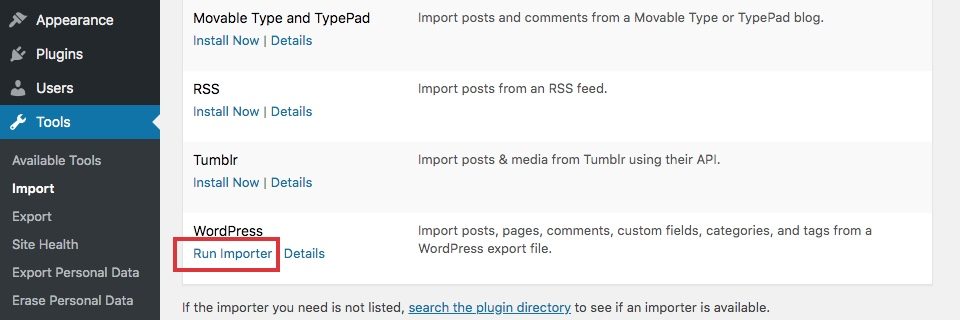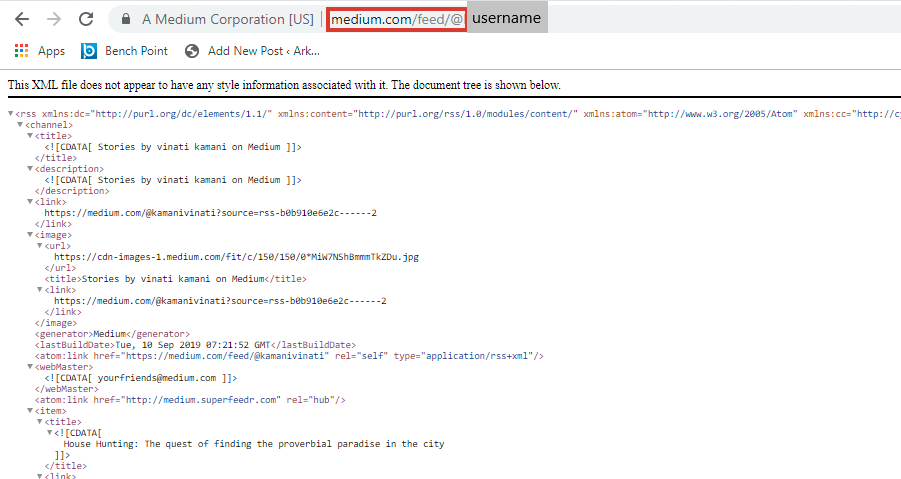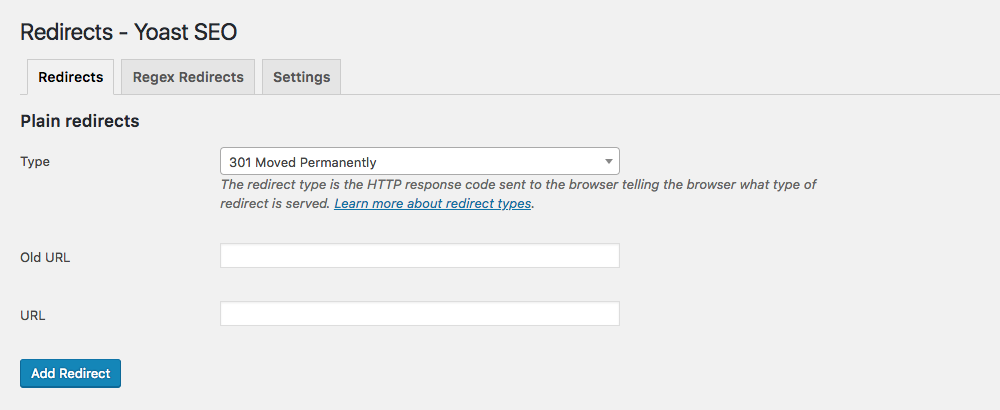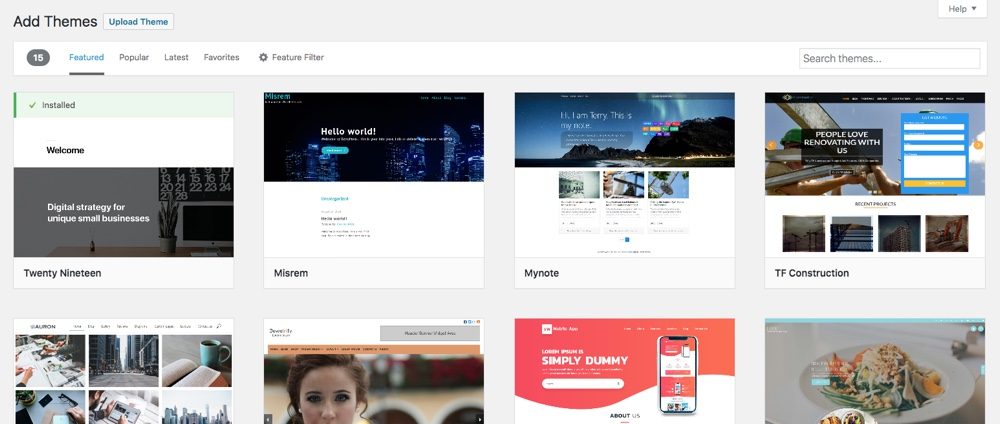Medium is a hybrid between a blogging platform and a social network. Sophie Maoura, director of B2B partnerships at Medium, calls it a social content platform. In his own words, "Medium is a place where words matter" so it's no wonder bloggers favor Medium, but it still lags behind WordPress in terms of popularity.
WordPress is still the more popular Everyone's blogging platform with 70 million new blog posts published on WordPress every month. The lack of control and the uncertainty of posting to a third party platform has caused people to switch to WordPress from Medium; after all, no blogger wants to be caught up in an episode of "Black Mirror" with no control over their fate or actions. Several industry stalwarts, including Slack, The Awl, and film school rejects, have moved their posts from Medium to WordPress.
Make the media switch to WordPress
Blogging with Medium has its advantages. offers an integrated distribution channel, using a participation-based algorithm that makes it easy to reach new audiences. At the same time, you send regular email summaries to your community, increasing your chances of reaching a wider audience. Medium at the same time offers a potential increase in search results, as its domain ranking is 94 (which is even higher than Wikipedia). Since it is already optimized for mobile devices and at the same time has a dedicated application, bloggers do not have to worry about design a responsive website for your blog. And since Medium is a self-hosted platform, no technical knowledge is required. Bloggers don't have to deal with technical problems related to hosting.
Despite the many advantages, Medium isn't just about rainbows and unicorns. It is no match for the flexibility and customization that WordPress offers. Control over content and monetization strategies, the ability to design custom calls to action to drive subscriptions, increased SEO rankings, and reduced chances of distracting the viewer with competing content are the main reasons. to switch to WordPress from Medium. If any of these seem applicable to you, the next guide is all you will need when switching your blog to WordPress.
WordPress.com or WordPress.org, and what is the difference?
WordPress.com is WordPress's freemium website hosting service, while WordPress.org is a self-hosted service. WordPress.com's free plan doesn't give you your own custom domain name and you only get a subdomain. Your site URL would appear as name.wordpress.com/, which looks unprofessional to readers and hinders your personal branding.
Monetizing the WordPress.com blog at the same time becomes a challenge as you cannot run any affiliate marketing programs or run direct ads through ad networks like Google Adsense. You can sign up for the WordPress profit sharing program, WordAds, to monetize your traffic. At the same time, there are limits on customization and the ability to add plugins to your blog, which can be restrictive for you.
WordPress.org, apart from this, is more reliable, gives you access to all the functions that WordPress offers and allows you to increase your subscribers and monetize your blog. So in this post we'll cover how to move your blog from Medium to WordPress.org to unleash the true power of WordPress (find our why in our full WordPress.com vs WordPress.org comparison).
How to move your medium blog to WordPress?
Medium is a self-contained ecosystem, so moving your blog content from Medium to WordPress is not an easy process. The export file format is not XML but HTML. Medium's RSS fields also don't follow normal RSS conventions, but with the right tools and knowledge up your sleeve, you can finish with as little effort as possible.
Here is the step-by-step guide to switch your blog from Medium to WordPress.
1. Get a custom domain name for your blog.
The first step to having a self-hosted WordPress blog is having a custom domain name. The domain name is the URL that is the address of your website on the Internet. Since Medium no longer offers custom domains, you likely don't have a domain name registered for your Medium blog.
There are several providers from which you can purchase a domain name for your blog (for example, GoDaddy has a promotion to get a premium domain name for only $ 4.99 throughout the first year). In case you already have a domain name registered, all you have to do is redirect your DNS (domain name system) to the WordPress site. You can use our WordPress DNS guide if you need help.
When selecting a domain name, at the same time we suggest adding SSL and selecting the HTTPS protocol to ensure the security of your WordPress site. Not only does it make your blog appear more trustworthy, but at the same time it can give you a slight boost in Google search rankings.
2. Configure your web hosting
Your WordPress site needs server space to be stored and web hosting companies do it for you. There are a number of WordPress-compatible hosting providers with varying price ranges that you can choose from. This guide to the best WordPress hosting options covers the different types of hosting and the companies that R Marketing Digital recommends for each one.
Most web hosting companies tell you directly whether their services are WordPress compatible or not. WordPress website hosting requires PHP version 7.3 and higher and MySQL version 5.6 and higher to support WordPress hosting (at the time of writing). Although it is a good idea to check the official current WordPress requirements just to be sure.
To make your life easier, we suggest that you use managed WordPress hosting if possible. With managed hosting, you don't have to worry about installing or maintaining WordPress as the hosting company will take care of this for you. Top managed hosting companies we recommend include WP Engine, Kinsta, and Media Temple.
3. Install WordPress
If you decide to forgo managed WordPress hosting for a shared, cloud, or VPS plan, you will need to install WordPress on your server. Most WordPress hosting companies make it possible for you to install WordPress by offering C-panel one-click installs. Otherwise, check your plan's online documentation or contact the hosting support team to order the installation process.
4. Export articles from Medium
The export of your blog content from Medium is done in HTML format and not XML. That and the differences in RSS feed conventions make importing content to WordPress.org challenging and you would need to take a roundabout approach to counteract the format incompatibility.
Exporting content itself is an easy task. All you need to do is open the user settings, click on the "Account" section and scroll down and click on "Download your information". A .zip file of all the blogs and content you have shared on Medium, the posts and drafts you have, the information available on your profile page will be sent to your registered email id in the form of HTML files.
The link will be active for a period of 24 hours after the email is received. Medium at the same time gives you the option to change the email id when you export your content.
5. Import articles in WordPress
For WordPress.org, you can run the Medium file in a WordPress to Medium import tool that converts the file to a WordPress ready format. Go to the admin section of your WordPress site and click on Tools and select import. Once you choose the WordPress import plugin and install it, all you have to do is click "run importer" and run it.
Another way to achieve this is through the use of the raw code of the URL of your Medium feed. Once you get to the page code and save it to your computer by right clicking on the page, an XML file is created. By using the XML file download plugin in WordPress, you can get all the content of your Medium blog posts in WordPress.
The third way, although at the same time you can use a roundabout. You can import the Medium files to WordPress.com and later the WordPress.com files (which are in XML format) can be exported and later imported to WordPress.org. It's understandable if you don't want to go through all the hurdles and do things this way, but knowing that you have this option doesn't hurt.
6. Get the multimedia content in WordPress
When importing content, the WordPress importer prompts you to assign an author. You can import the author profile from the media or create a new profile. The choice is up to you.
It is important to note that the medium export file does not contain images that you may have used in your blog posts. The exported files are in HTML format with images delivered using Medium's own CDN (Content Delivery Network). This means that to host your images on your WordPress blog, you will need to use a third-party importer or manually upload them to your blog posts.
7. Add URL redirects where needed
Previously, Medium allowed users to have their custom domains, so redirecting Medium posts to a WordPress site was a possibility. After pointing your domain name to your new WordPress servers, you just needed to use a redirect plugin. Just add the middle URL as the source URL and the new WordPress URL as the destination. Plugins like Yoast SEO offer this feature, making it easy to manage from your dashboard.
Unfortunately, if you have a Medium.com domain, there is currently no way available to set up URL redirects from your Medium blog to your new WordPress blog.
Now that you have moved your blog to WordPress, all that is left to do is customize your blog. with a theme and some useful plugins.
8. Customize your design with a WordPress theme
By default, WordPress offers a wide variety of free WordPress themes, available directly from your WordPress dashboard (under Appearance> Themes). And there are hundreds of premium WordPress themes that have even more features. If you're not sure where to start, here are some of our top WordPress blogging themes to get you started.
Whatever the case, choose a theme that resonates with your blog's theme and blends in with your personal brand identity. Once you have the theme installed, don't forget to configure the navigation menus and add widgets to your sidebar or footer (depending on your theme). A well-organized navigation menu is helpful for visitors to find their way through the blog.
9. Choose and add useful plugins
Even though there are numerous plugins you can choose from in WordPress (just navigate to Plugins> Add New to search for them from your dashboard), chewing on more than you can bite into is not a smart strategy. Too many can lead to plugin clashes which, in turn, can damage your site. Therefore pick and choose the ones that you think are totally essential for your blog.
We regularly recommend using an optimization plugin like Yoast SEO, a spam filter like Akismetand a security plugin like iThemes Security or VaultPress. Other than that, there are tons of plugins for event calendars, ecommerce stores, live chat, and more. Do some thinking and choose the best plugins for you.
Moving your blog from Medium to WordPress can seem like a daunting task. But at the end of the day, when you start doing it, you will find that it is not that difficult, even if it is a detailed process. Once you're done, do a full review of your site. Make sure all internal and external links are in place and working properly and you are ready to fully utilize the freedom and flexibility that WordPress has to offer.












